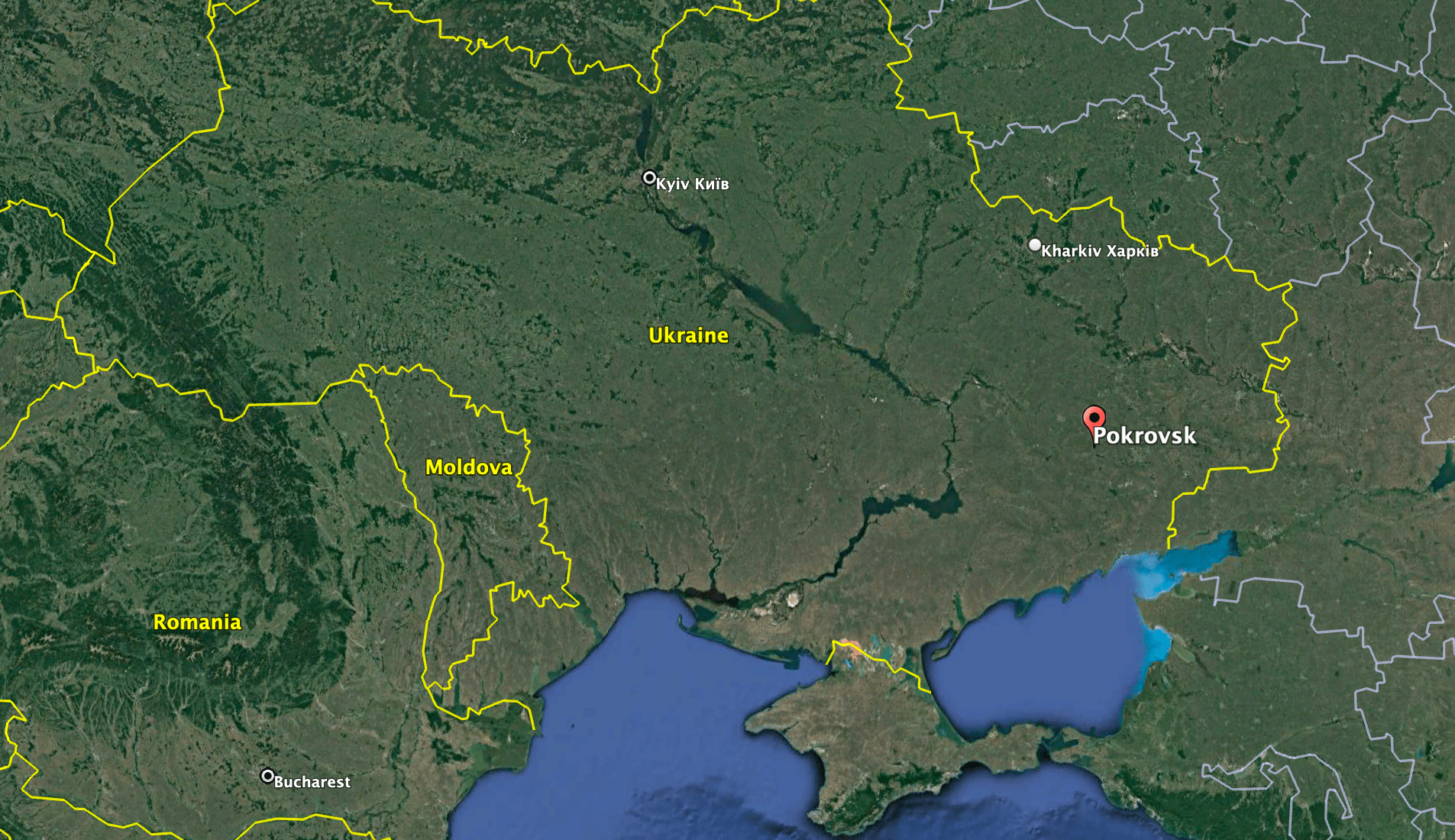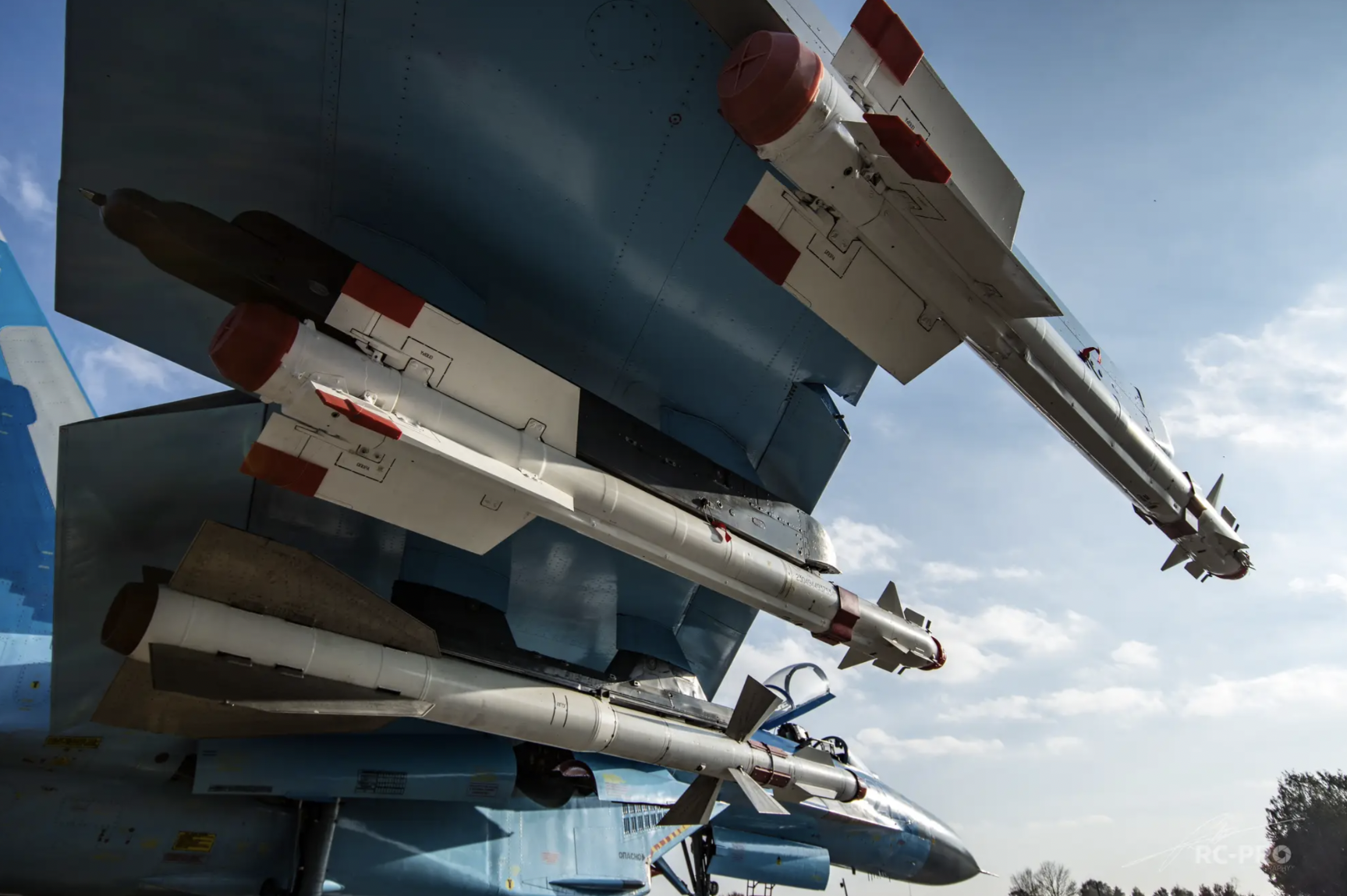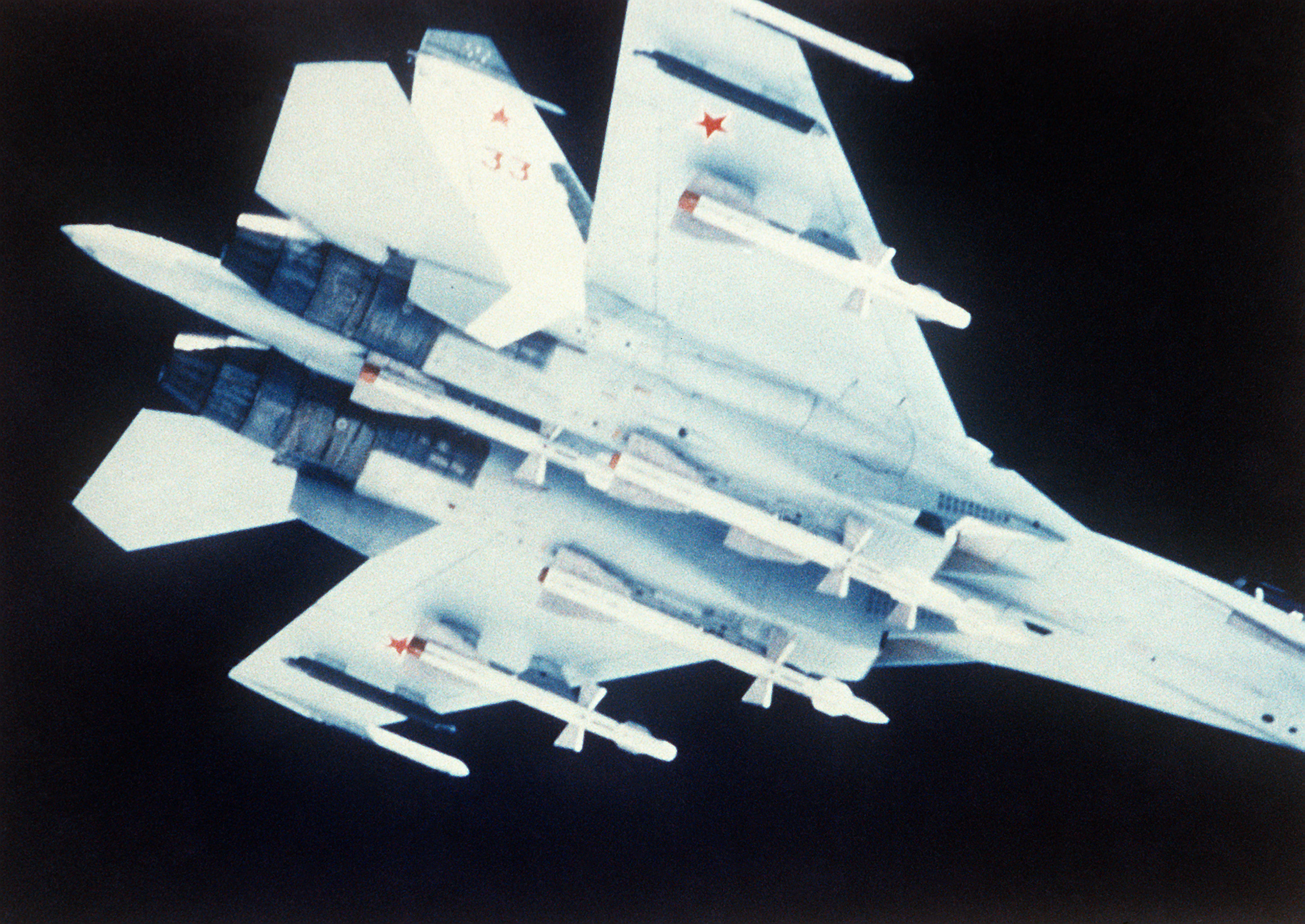Civilian onlookers out in the street, staring up as a dogfight unfolds above them, the blue skies cross-hatched by trails of smoke. It might sound like a scene from the Battle of Britain, but this is Ukraine, where the air war is today still raging.
In a video published yesterday on social media by Matthew Luxmoore, The Wall Street Journal’s reporter in Ukraine, we can see dramatic footage purportedly from one such aerial engagement, including the very rare sight of a modern fighter jet firing air-to-air missiles in a genuine combat situation.
The reporter describes the scene, over the city of Pokrovsk, in the Donetsk Oblast in eastern Ukraine as a “literal dogfight.” Luxmoore concludes that it was “a pretty incredible sight over a part of Ukraine accustomed to relentless rocket and artillery fire and little action in the skies.” The city has certainly seen its fair share of the fighting, which forced around 70% of its inhabitants to evacuate in the weeks following Russia’s invasion. Since then, it has taken a battering due to its proximity to a fairly fluid front line.

Luxmoore’s tweet suggests that a Ukrainian Air Force Su-27 Flanker fighter is shown dispensing infrared flares to spoof an infrared-guided air-to-air missile, or AAM, fired by a Russian fighter jet that’s out of frame. In fact, what we see in this brief footage is the Flanker in question firing two AAMs of its own.

Again, encounters of this kind are hardly routine in modern air combat, and it’s even less common that they are witnessed by civilians, in battles being played out over their hometowns in broad daylight.
Since we don’t see the purported Russian aircraft being targeted, there is a chance it was actually a helicopter, drone, or even a cruise missile. The video is nonetheless fascinating and well worth a closer look.
As to the identification of the attacking aircraft as Ukrainian, rather than Russian, it’s unclear how this was established by the reporter, although we have reached out to them for more details. Russia also uses different Flanker versions in the conflict, including the multirole Su-30SM and Su-35S, as well as a smaller number of upgraded basic Su-27s. For the time being, we shouldn’t rule out the possibility that it’s a Russian jet firing the missiles.
Either way, a Ukrainian aircraft flying at this kind of altitude in the vicinity of Russian surface-to-air missiles (SAMs) would be highly risky, even without the presence of hostile fighters. A significant Russian SAM threat would seem to be likely, considering Pokrovsk’s proximity to the front line.

At the very beginning of the video, around the 1-second mark, a tiny dark smudge is seen enveloping the Ukrainian jet as it launches a pair of AAMs. These can then be seen streaking away from the aircraft, in the form of two fast-moving white dots that quickly begin to separate and track on different, curved courses, presumably toward their target. That one of the missiles follows a tighter track is made evident by the trails of white smoke that also soon appear.
The jet can then be seen turning away, in the opposite direction to the missiles.
As well as the sound of the jets’ engines, one or perhaps two prominent bangs can also be heard. One, at the start of the video, could simply be the background noise of the aircraft, but another, at around the 10-second mark, is much more obvious.
The sounds, especially the more prominent second one, could be the sonic boom, or booms, of the missiles, depending on their altitudes and flight paths.
The War Zone spoke to former fighter pilot Paul Tremelling, who has flown British Harriers in combat, as well as U.S. Navy F/A-18Es as an exchange pilot, and who has fired both AIM-9M Sidewinder and AIM-120 AMRAAM missiles on exercises. He provided his initial impressions of the video, noting that the poor quality of the footage made it hard to come to any definitive conclusions about what we can see happening.
“Whatever is fired I think we can safely say there are two of them,” Tremelling explained. “That’s perfectly reasonable in that you could fire two weapons for a couple of reasons: Pk [to increase the probability of a kill], two targets, fun… but the launch interval is incredibly small or simultaneous which is noteworthy.”
Tremelling also noted that the two missiles appear to travel at different speeds. “This might be just their direction of travel — backing up the [two] different targets theory — or a malfunction. The final view we get shows the smoke trails are different — one is noticeably more of a hockey stick and shorter than the other, potentially indicating different amounts of lead being taken. In (woolly) conclusion I’d go for a simultaneous launch of two weapons, probably at different targets, and then either (a) different weapon speed demonstrating a ‘cocktail’ of two weapon types launched (AA-10 plus AA-11?) or (b) potentially a failure of some sort.”

In Soviet doctrine, it was commonplace for a fighter or interceptor to launch examples of both radar-guided and infrared-guided AAMs simultaneously, or near-simultaneously, to make it that much harder for the aircraft being targeted to take effective evasive actions or countermeasures. Several AAM types were provided with optional radar-frequency and infrared seeker heads, for just such scenarios.

Today, Ukraine fields the medium-range R-27 (AA-10 Alamo) in its radar-guided and infrared-guided versions, and both guidance types have also been seen on Russian aircraft used in the Ukraine war. Using a radar-guided R-27, with its semi-active guidance, would require the launch aircraft to continuously illuminate the target, and that could well be broken when the Flanker turned away.
A Russian Su-30SM Flanker multirole fighter, seen in 2019, armed with a mix of radar-guided and infrared-guided R-27s, as well as R-73s:
On the other hand, the Alamo is optimized for engagements at medium range, out to a distance of around 37 miles in its basic form, or around 60 miles in its extended-range ‘long-burn’ form. The reported minimum launch distance is 1,640 feet, at which range a short-range R-73 (AA-11 Archer) would be a more likely choice. In a tail-on engagement, the R-73 is designed to hit targets at ranges of between 980 feet and 19 miles.

Another former fighter pilot that The War Zone spoke to on condition of anonymity said that the apparent close proximity of the aircraft involved suggested some kind of infrared-guided missiles were likely used, but that it’s impossible to tell for certain.
Tremelling also recalls training alongside Hungarian MiG-29 pilots who would, in certain circumstances, elect to fire a radar-guided R-27 together with a heat-seeking R-73 against a single target.
“The Hungarian blokes said something like they’d cue up [a radar-guided] AA-10A and leave it in some form of auto-launch mode then flow towards the merge looking for Archer shots using the helmet sight — as the displays were complex. If I understood them correctly it would probably lead to something like this.”
As an alternative to the missile ‘cocktail,’ or two of the same type of AAMs being fired at one target to boost kill probability, the Flanker pilot could have actually been targeting two separate Russian aircraft. However, the fact that a single Russian jet is mentioned in the original account makes this less likely.
Then, of course, there’s the possibility of some kind of malfunction, as Tremelling also suggests. Perhaps the first missile failed or appeared to fail, or two AAMs rather than one were launched in error.
Ultimately, based on the video and Luxmoore’s account, it’s not clear how the engagement ended for the Flanker pilot. “The few residents remaining in Pokrovsk rushed out to gape at the spectacle and applaud,” he added. Exactly what happened to the Flanker’s two missiles is not obvious.
While we may never know the full story, the fact that aerial engagements are still taking place over Ukraine once again reflects the reality that, despite the odds being stacked against them, the Ukrainian Air Force is continuing to put up a fight against the Russians, and denying them air superiority, even six months into the conflict.
Contact the author: thomas@thedrive.com
